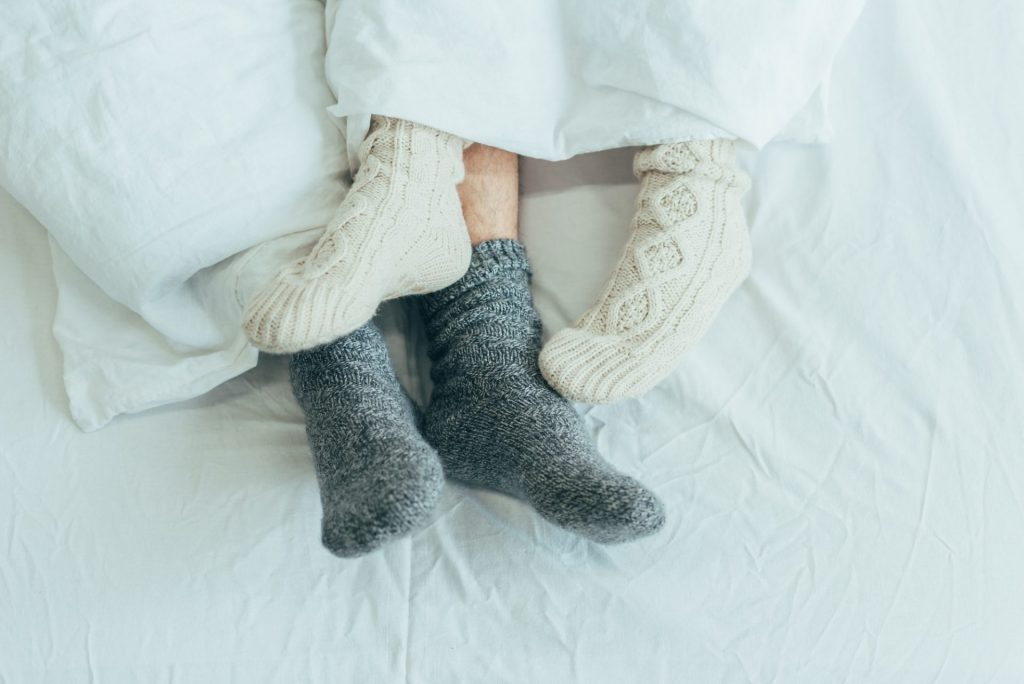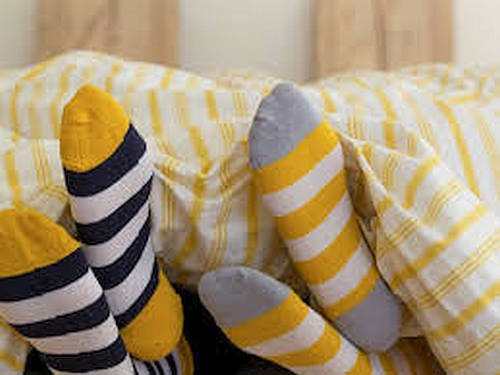

The practice can also protect our skin’s natural moisture, keeping them safe from dryness or painful cracks.įinally, it has been suggested by some so-called sleep science experts that wearing socks in bed can lead to better sex due to the increased likelihood of having an orgasm. In addition, wearing socks can offer other benefits besides helping you fall asleep. Hot flushes are often accompanied by sweating, palpitations and a reddening of the face. They help to regulate body temperature by keeping the extremities warm and helping excess heat to escape through the skin. Socks at night can also help reduce hot flushes that are commonly associated with the menopause for women over a certain age. Wearing socks can help protect the feet, ankles and toes from such attacks. It reduces the flow of blood to the hands and feet, leaving the person feeling numb and cold.
#SHOULD WE SLEEP WITH SOCKS ON SKIN#
Raynaud’s affects the blood vessels in the skin and attacks a person when they feel cold or stressed.

Getting into this habit can help to prevent certain medical conditions affected by circulatory problems, such as Raynaud’s disease. Some scientists believe that wearing socks to bed can shorten the time it takes us to get to sleep by as much as fifteen minutes, thanks to the effects of vasodilation. It also releases excess heat through the skin to help us get to sleep faster and stop us from waking up feeling overheated or faint. This helps to redistribute heat around the body and stabilise its core temperature to stop it lowering in the early hours of the morning. As our hands and feet warm up after being covered, the blood vessels in them start to dilate in a process known as vasodilation. Wearing socks can help stave this reduction in temperature and so keep us in the land of nod for longer. It is also a time when worries can start to surface, also preventing us from feeling relaxed enough to nod off in the calm of our bedroom. The lowest body temperatures tend to occur around 4 am which is often a time that people find themselves waking up and being unable to drop back off to sleep. Keeping our extremities covered can really help keep things steady inside our bodies. Once we are sleep, however, we need our core temperature to remain consistent so that our body can relax and not experience any stimulating or sudden changes in temperature. From that point onwards, the temperature then lowers throughout the night, making us feel drowsy and stay asleep as our bodies rejuvenate. Our temperature rises gradually throughout the day, peaking in the late afternoon when we are at our most alert and awake. How can socks help you fall asleep?Īs we said in the introduction, the science behind sleeping with socks on is all based on body temperature regulation. They need external help to keep warm and help our core body temperature stay consistent overnight. We are endothermic creatures, which means that we regulate our own body temperatures and generate our own heat, unlike reptiles, which are cold-blooded and need external heat from the sun to stay warm.Īs our activities start to slow down and stop in readiness for going to sleep, our extremities, especially our feet and toes, are at greater risk of becoming cold than the rest of us. To understand whether or not you should start sleeping with socks on, it is essential to get a grasp on how our bodies work. Sleeping with socks on: is it good or bad? As sleep tips go, this one is well worth a try. Wearing socks can keep our internal temperatures stable and therefore help us stay asleep for longer. As we sleep, our core body temperature drops, affecting the quality of our sleep and rousing us back into consciousness if it falls too low. Scientists have found that being able to regulate our body temperature is an important aspect of the sleep cycle.Īdults typically need between seven and nine hours of sleep every night. It might seem a little odd, but anyone who has trouble sleeping would do well to think about putting on a pair of socks before they climb into bed tonight.


 0 kommentar(er)
0 kommentar(er)
